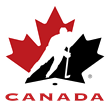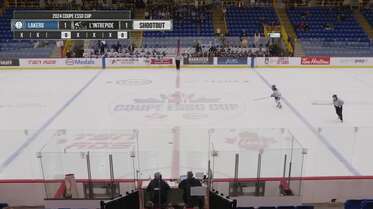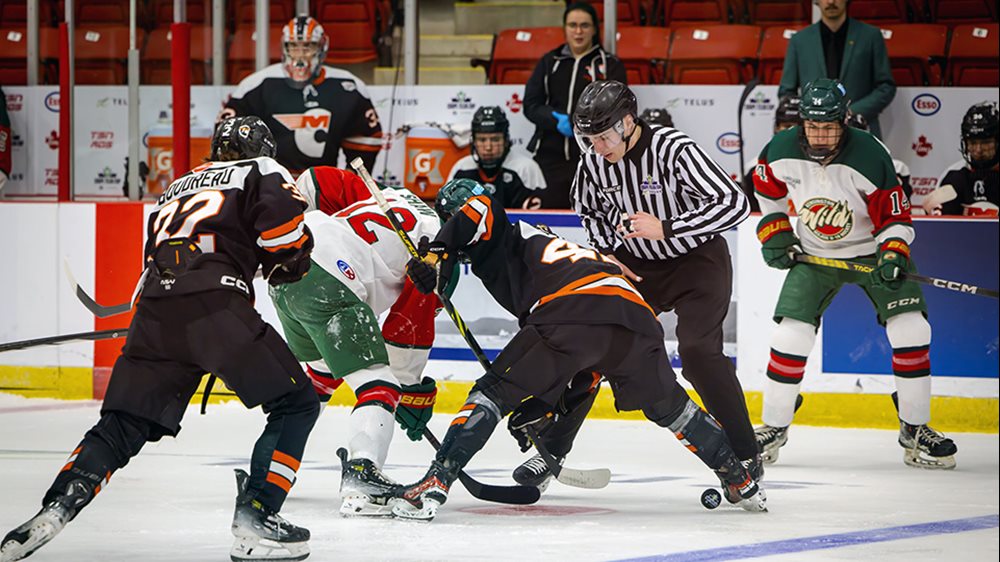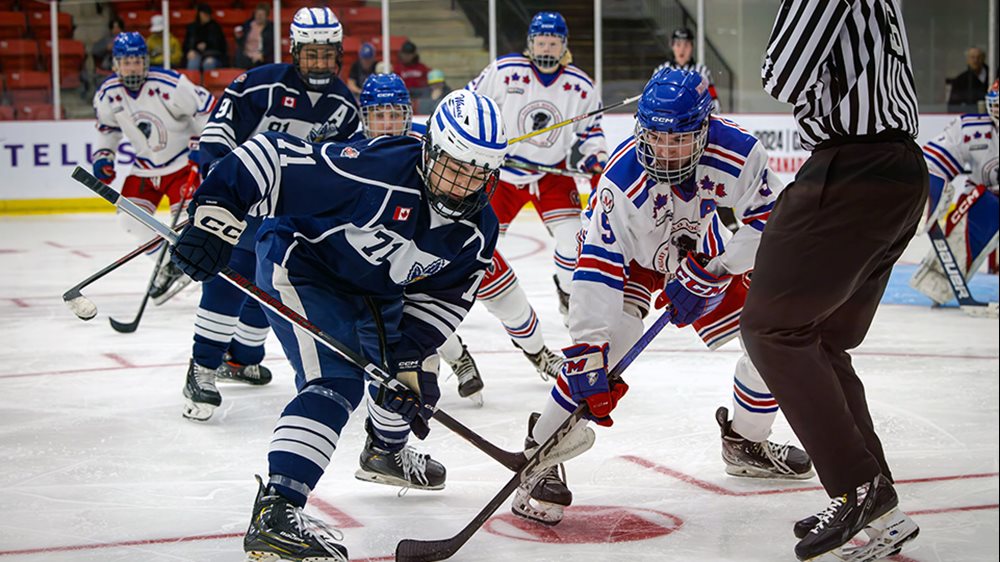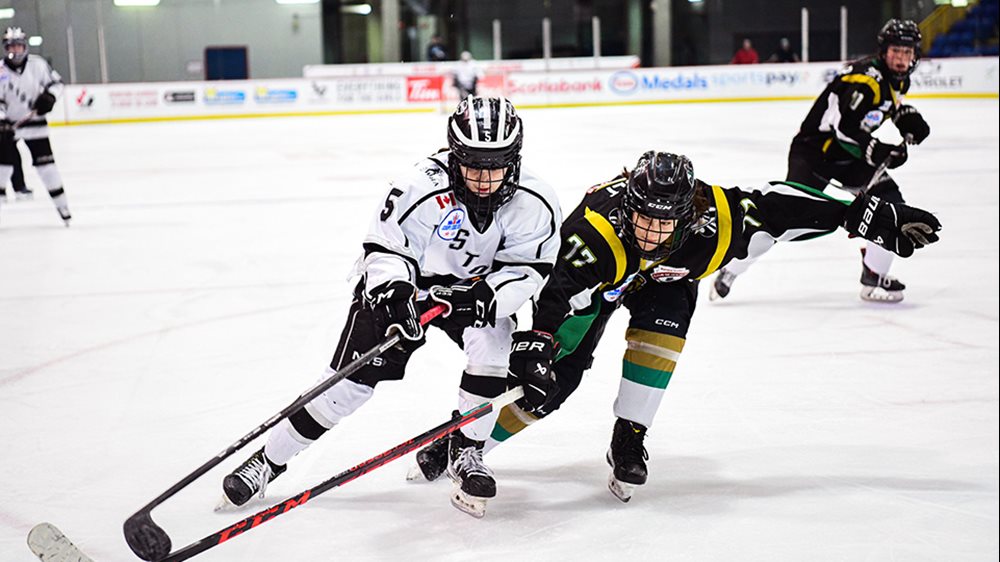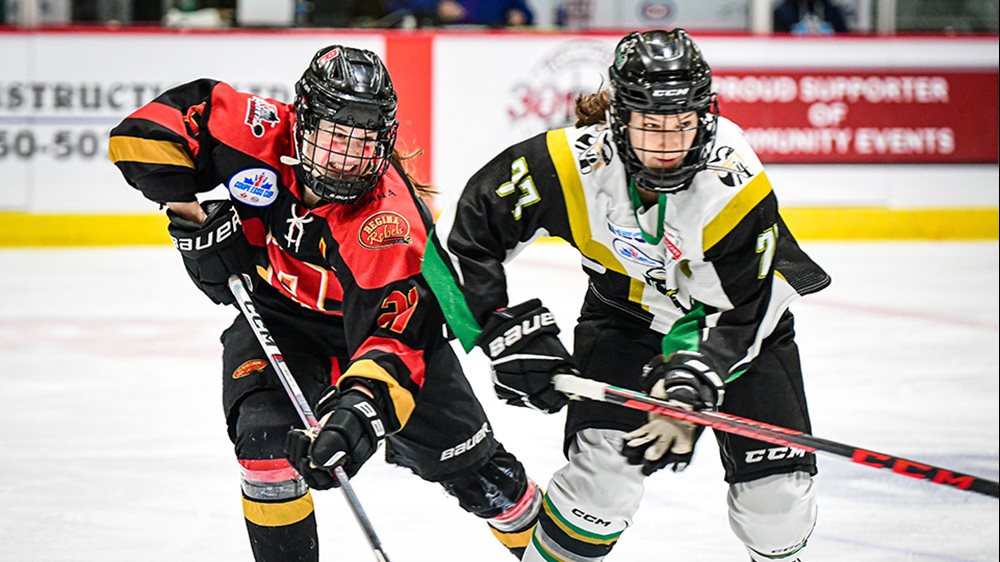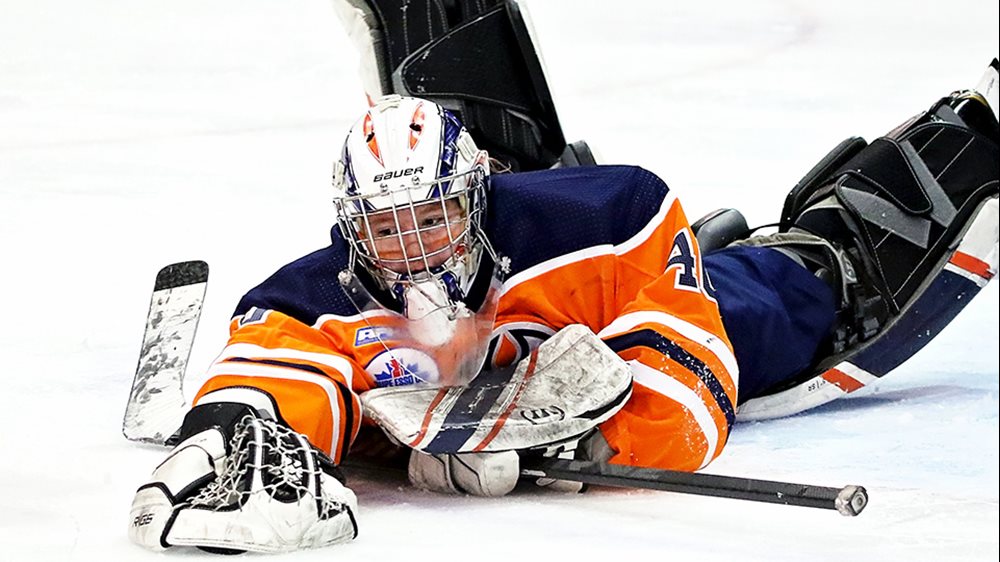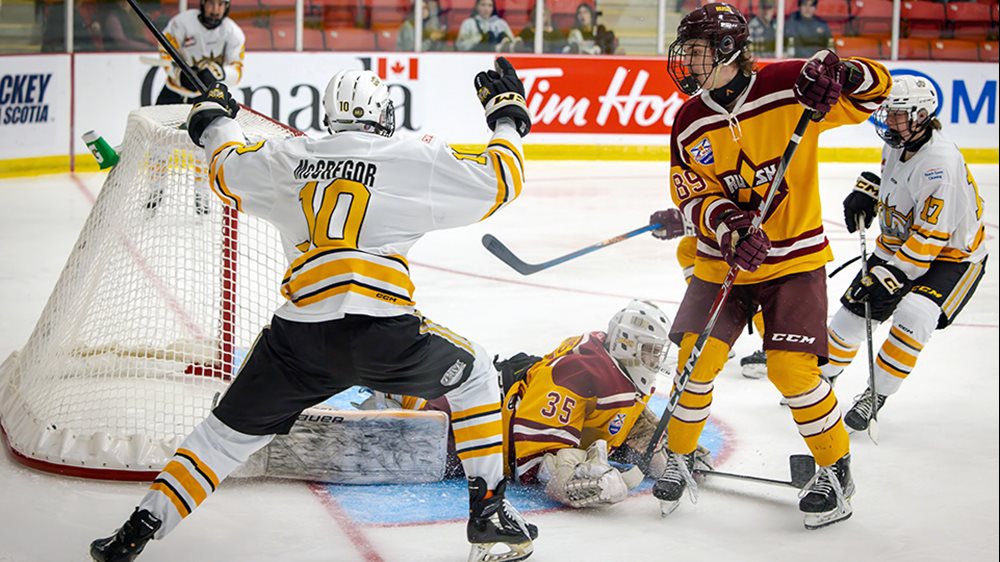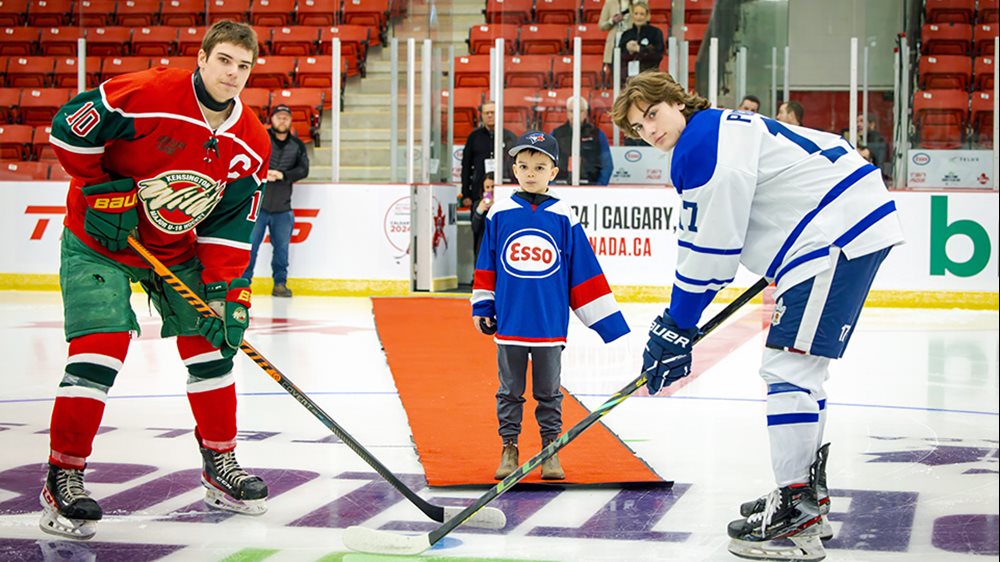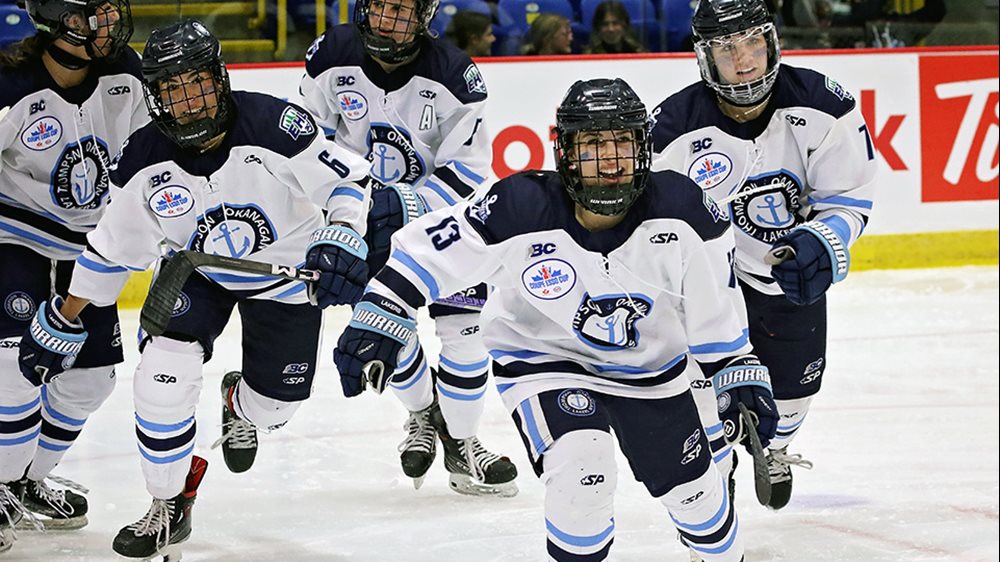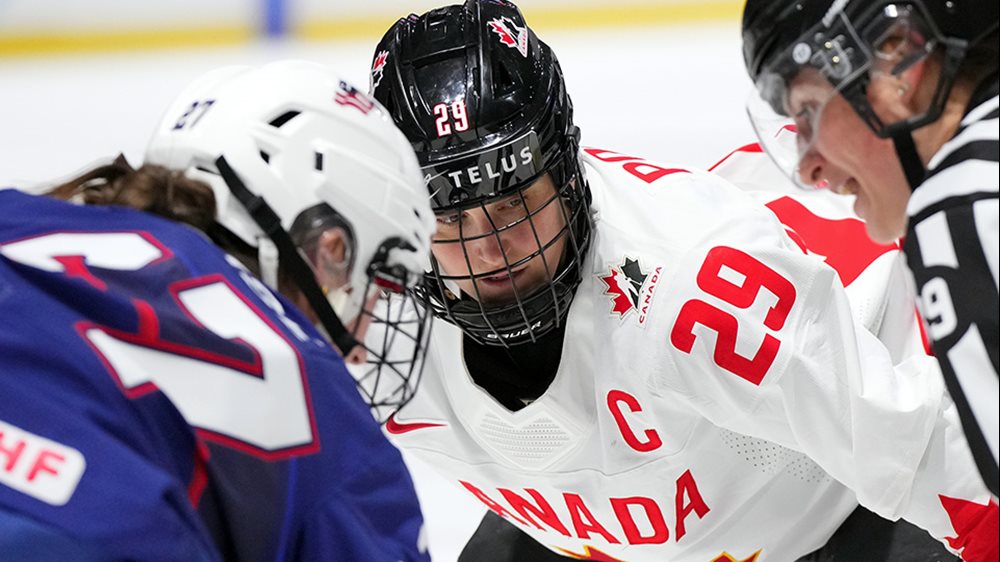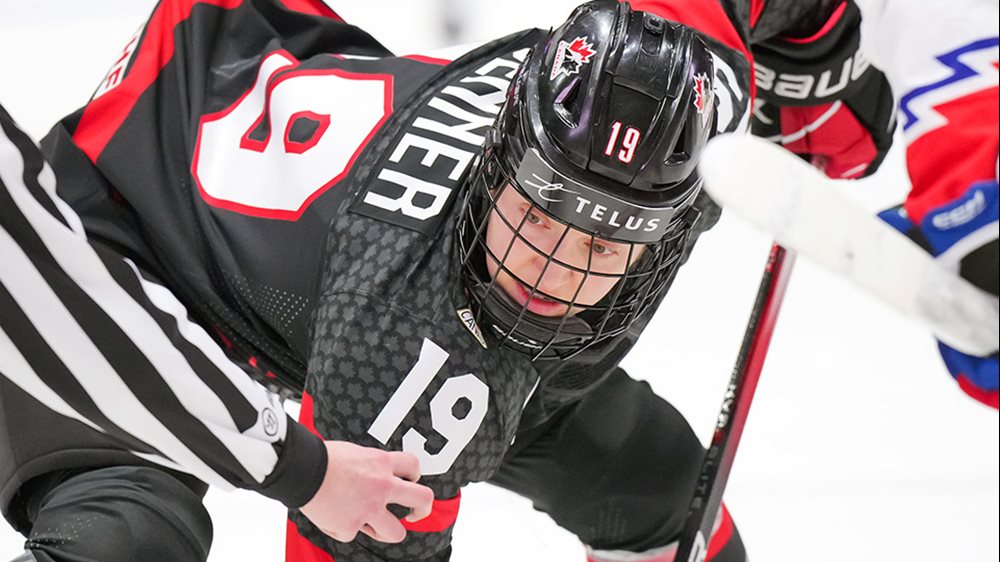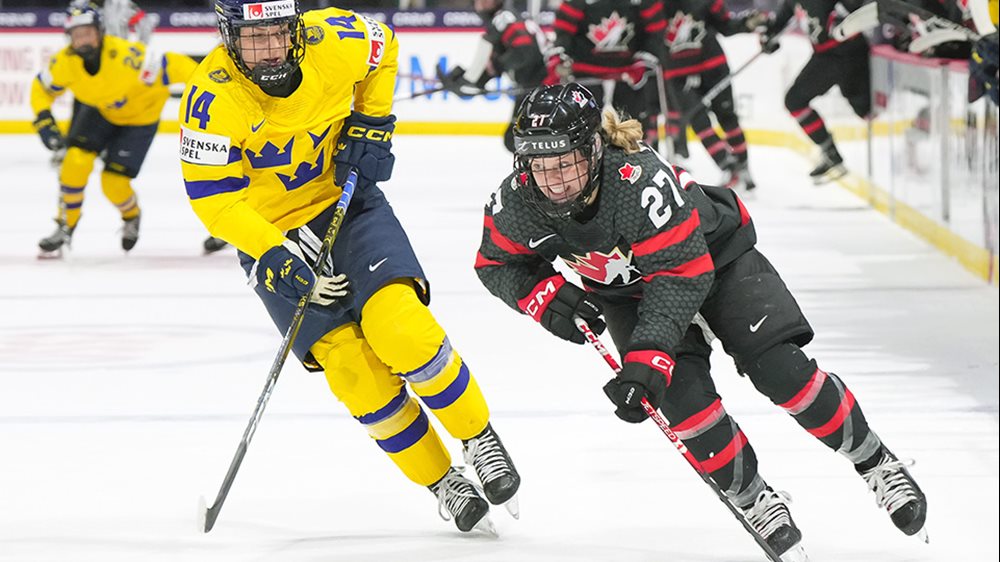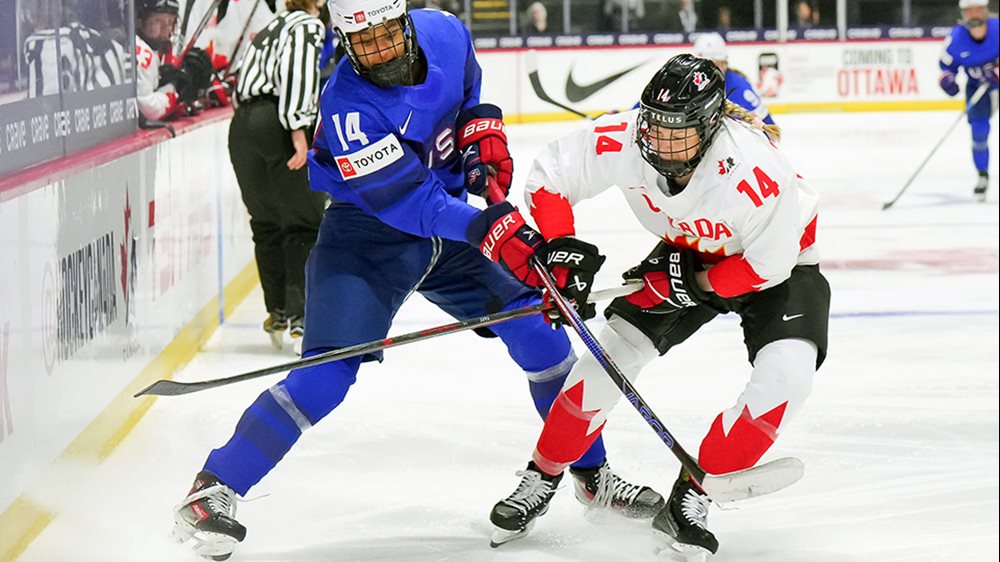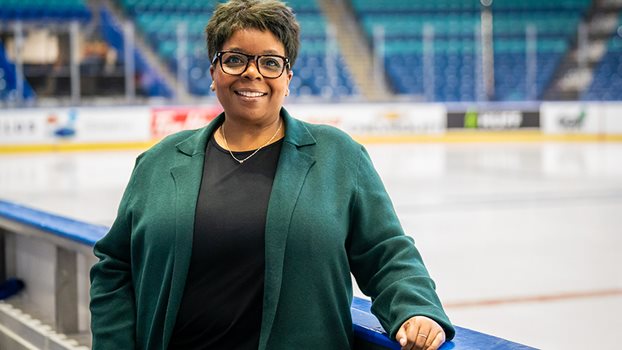
Questions & Answers with Esther Madziya
The Hockey Canada communications manager opens up about her career path, working in sports media as a minority woman and what she’s telling the next generation
If you’re a working media member that has covered Canada’s National Women’s Team over the last four years, you know the name Esther Madziya.
But if you’re not and you don’t, you should.
A Hockey Canada communications manager, Madziya was part of the staff with the Olympic gold medal-winning team at Beijing 2022, sandwiched around a pair of IIHF Women’s World Championship gold medals, spending weeks and months on end in bubbles and quarantines during the COVID-19 pandemic, away from family and friends, with that singular golden goal in mind.
Outside of her Team Canada work, Madziya is an integral part of the Hockey Canada family, and was recognized for her contributions with the Hal Lewis Award as the organization's staff person of the year for the 2018-19 season.
To celebrate National Women and Girls in Sports Day and Black History Month, HockeyCanada.ca sat down with Madziya to talk about her journey and how the industry has evolved for minority women.
HC: How did you get your start in sports media?
EM: I went to SAIT [the Southern Alberta Institute of Technology in Calgary] and took the broadcast journalism program. The program has evolved since then, but it was called CTSR – Cinema, Stage, Television and Radio. And then you could specialize in whatever you wanted to do.
I wasn't sure what I wanted to do at school. Way back when, I wanted to get into accounting, which is not my jam at all, but I always liked sports. And I thought, ‘You know what, maybe I want to get into sports.’ So I took the broadcast program at SAIT, with the hope of getting into sports broadcasting and one day maybe being on TSN.
I ended up getting a job in radio. I did a practicum in Lethbridge, which is my hometown, at the radio station. The station also had the broadcast rights to Lethbridge Hurricanes games, so I was covering the intermission reports and updating scores and stats, and it just evolved from there.
HC: What was the landscape like in sports media for women when you came out of university?
EM: At that the time, there weren't a lot of women in sports. There was also not a lot of diversity, in broadcasting and in sports in particular.
Growing up, my parents always said, ‘No matter what happens, you are going to have to work harder than the next person. You're going to have to prove yourself all the time, because you are a woman and because you are a minority. Nothing's going to come easy for you.’
So that was just something that always stuck with me. And I remember some of my colleagues at SAIT, as we got closer to graduation, saying that it would be easier for me to get a job because I was a woman and a minority, which I didn’t necessarily agree with. But if being a woman and being a minority was going to get my foot in the door, then you know what, I'll accept it. But at the same time, if I can't do my job, it's not going to keep the door open very long.
It was just the reality of, you're going to have to work twice as hard as the next person if you want to have any opportunities. That was just something that always stuck with me.
HC: You’re coming up on nine years with Hockey Canada later this week; what was the career path to get here?
EM: I worked at the radio station in Lethbridge for four years, working the morning show and doing intermission reports with the Hurricanes. I moved into television at Global Lethbridge for a few years, and in 2002 was lucky enough to get a position as a sports reporter at Global Saskatoon. I focused on a lot of university sports, did men's and women's hockey, reporting on those. That was my beat. Canadian Junior Football, I covered the Saskatoon Hilltops. I covered volleyball, curling – learned a lot about curling – covered a lot of SJHL hockey, minor hockey, all that kind of stuff.
In 2010 there were cutbacks, and the industry as a whole was changing, so I decided to go home to Lethbridge. I went back to the radio station, started doing the morning show again, which I never thought I’d do, and was involved with Hurricanes games on both TV and radio.
A year later, the Hurricanes’ communications manager took another job in the Western Hockey League, and the team offered me the position. I was with the team for four years before the Hockey Canada position came open, and I started in February 2015.
HC: You’ve had the opportunity to work with amazing athletes, travel to amazing places, have a front-row seat to Canadian hockey history. What is that like?
EM: Honestly, it's hard to describe, because unless you're in it, you can't even really describe it. But never in my wildest dreams would have imagined that I'd have the opportunities that have come my way. I never would have imagined that I would have gone to some of the places that I've gone, had the opportunity to work with some of the athletes that I've worked with, had the opportunity to cover events, whether it’s from the event side or being embedded with a team.
I think the other piece that makes it special is what it means to my family. My family is incredibly proud of just seeing that this kid who, when she was younger, probably didn't always have the greatest focus on her studies, is doing what she's doing now.
There are times when I’ve hosted a press conference, and my family tells their friends, ‘That's our kid. That's my sister. That's my daughter.’ They're so proud of that, and that means the world to me, but I also know that I've always tried to be really respectful and try to work hard, and do right by the Madziya name. It means a lot to them, just as much as it means to me.
HC: You’ve mentioned your family a few times, and the influence they’ve had on you. How important has that support system been as you’ve progressed through your career?
EM: No matter what I wanted to do with my life, they've always just been in my corner. And I think for any kid to have their parents say, ‘We're so proud of you, no matter what you do. We see the work that you do,’ it's a cool thing.
Our last name is Madziya. We're the only Madziya family here in Canada, and they're really proud of that. Their support just means a lot, because they've always been there. My mom always says, ‘Look at the opportunities that you've been given, look at the jobs that you've had, and appreciate that. And even though there might be some hard times along the way, those hard times strengthen you and they're the reason that you keep having the opportunities that come your way.’
HC: To be one of the faces of Team Canada with national and international media… does that carry a little more weight, mean a little more, because you’re a minority woman?
EM: Absolutely, because there still is a little bit of, ‘Do I really belong here?’ In the back of my mind, there is still that little bit of… watch how you walk, watch how you carry yourself, watch how you're dealing with somebody, watch how you're dealing with other media, because if you offend somebody, it’s pretty easy to say, ‘Well, it was her.’
In the back of my mind, I'm always still thinking about working twice as hard. I just don't want to make any missteps, because I feel like somebody is just waiting for me to make a mistake to say, ‘See, that person can't do it. She's not qualified. She was just a token hire.’
Those things still play in the back of my mind. I don't think those things will ever not play in the back of my mind.
HC: Women’s hockey has grown by leaps and bounds in recent years, and you’ve been able to see it up close. What has that been like to watch the game evolve?
EM: It’s pretty cool to see, because there's a lot of hard work that's gone into growing the game, and you see how passionate the athletes are, but you also see how passionate the staff is. So seeing where it's at and seeing so many people work so hard, that brings me a lot of joy, because they had their dreams when they were a little girl. And to see where things are at and to see the things that they've been able to do and accomplish, but to also get a front row seat to it, is pretty cool.
And I think one of the neatest things for me is that because I've been here nine years and have worked up and down the National Women’s Program, and at national events like the National Women’s Under-18 Championship, I’ve been able to see players from 16, 17, 18 years old through to the national team, and see the difference they’re making now. It’s pretty cool to see that progression – as hockey players and as women.
HC: Throughout your career in the media industry, how have you seen the doors open for women, and for minorities?
EM: It's like night and day. The industry has changed for the better. There are more opportunities, more doors opening up today. I think a lot of organizations have looked at their product and asked, ‘Is our TV program, is our news program, is our sports program indicative of what the rest of Canada looks like?’ Because it has to, otherwise you're not going to connect with people and you're going to lose them.
There are so many different avenues today. There are podcasts and influencers and so many other things that people are doing on their own. You're seeing a lot more women in different roles. And we're seeing a lot more of that because it's about hiring the best person that's out there.
HC: What advice do you have for women, or minorities, that want to get into sports but maybe don't feel like they have a path?
EM: If that's what you want to do, pursue it. Don't let anybody stop you. Somebody may say no, a door may close, but it's not no forever, and there's going to be another opportunity. Obviously if somebody says no, it cuts deep, but it just means not right now. Know that you belong there just as much as the next person. At the end of the day, everybody puts their pants on the same way.
So, pursue what you want to do. Don't take no for an answer, do your research, be confident and go in knowing that you know that you can do the job. Treat people with respect, and you'll hopefully get that respect back. Nobody should ever tell you that you don't belong.
For more information: |
- <
- >
